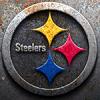I believe that what Jeff, I, and others are working to perfect and improve with our laser diode imaging process might better be described as "continuous-tone" imaging. There are no "dots" or half-toning involved, but rather a smoothly varying shade change between one pixel and the next in an image, aided by the constant velocity (CV) algorithm of the Mach3 CNC control software we use. Each pixel burned by the laser beam is smoothly blended into the following pixel.
Lee is quite correct, in my opinion, that wood does not likely shade evenly in 256 steps from one surface point to the next in response to the degree of power absorbed(?) from the laser beam, but it does appear to shade close enough throughout a complete image so that to the eye it does appear to be doing so. Proving or disproving whether or not wood burns truly proportional to the applied laser power is near impossible with the tools we have available to us today, and is not really debatable with other than personal opinions at this time. A Google search has so far failed to produce any documents relating to the subject.
The diode imaging process also appears to be aided by the spacing of the scan lines of the final images. Currently we are only capable of "scanning" at a step over distance of 0.006 to 0.008 inches due to limitations in the currently available optics we have available to use. The spacing between scan lines (unburned wood) seems to help lighten some images.
We are also generating continuous-tone gray scale images with two different methods, variable power (analog control) and variable feed rate (constant power). The variable feed rate method (VFR) varies the velocity of a fixed power laser beam proportionally to the pixel shades of an image, thus allowing the substrate (wood or whatever) to burn lighter or darker shades. In some instances, I believe the VFR method may be better than the analog method at producing gray shades, depending opon the substrate used, and we have not yet fully explored either method to determine which is best.
This discussion is not intended (never was) to be a debate of which laser imaging method is better/best. What Jeff started out in this thread to show was a different method of reproducing an image with a low cost laser diode. The subsequent discussion has been very informative and enlightening in its entirety, and I believe we have all learned (are learning) a lot about our different methods and the equipment we use. Comparing commercial needs and hobby needs will hopefully not interfere with our future appreciation of each others work and interests.
Thank you all,
John




 Reply With Quote
Reply With Quote







